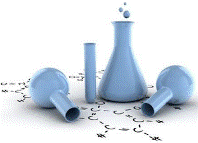Chemical and Biomolecular Engineering, Department of

Department of Chemical and Biomolecular Engineering: Faculty Publications
Date of this Version
2-17-2023
Document Type
Article
Citation
Poblete Jara C, Nogueira G, Morari J, do Prado TP, de Medeiros Bezerra R, Velloso LA, et al. (2023) An older diabetes-induced mice model for studying skin wound healing. PLoS ONE 18(2): e0281373. https://doi.org/10.1371/journal. pone.0281373
Abstract
Advances in wound treatment depend on the availability of animal models that reflect key aspects of human wound healing physiology. To this date, the accepted mouse models do not reflect defects in the healing process for chronic wounds that are associated with type two diabetic skin ulcers. The long term, systemic physiologic stress that occurs in middle aged or older Type 2 diabetes patients is difficult to simulate in preclinical animal model. We have strived to incorporate the essential elements of this stress in a manageable mouse model: long term metabolic stress from obesity to include the effects of middle age and thereafter onset of diabetes. At six-weeks age, male C57BL/6 mice were separated into groups fed a chow and High-Fat Diet for 0.5, 3, and 6 months. Treatment groups included long term, obesity stressed mice with induction of diabetes by streptozotocin at 5 months, and further physiologic evaluation at 8 months old. We show that this model results in a severe metabolic phenotype with insulin resistance and glucose intolerance associated with obesity and, more importantly, skin changes. The phenotype of this older age mouse model included a transcriptional signature of gene expression in skin that overlapped that observed with elderly patients who develop diabetic foot ulcers. We believe this unique old age phenotype contrasts with current mice models with induced diabetes.
Included in
Biochemical and Biomolecular Engineering Commons, Biomedical Engineering and Bioengineering Commons


Comments
Open access.